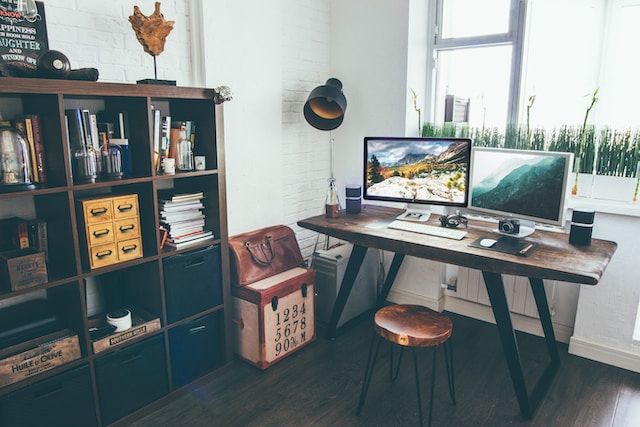Creating a tranquil and functional home begins with discarding items you no longer need and neatly organizing what remains. As many of us know, tidy spaces lead to a more focused and calm state of mind. If you’re looking to rejuvenate both your physical surroundings and mental well-being, here’s a guide, enriched with expert minimalist insights, on how to effectively declutter your living area, allowing you to lead a happier and healthier lifestyle.
1. Set Clear Goals
Begin by setting specific decluttering goals for different areas of your home, like the bedroom, kitchen cabinets, or wardrobe. Clear goals provide a sense of direction and purpose, helping you create functional and visually appealing spaces without feeling directionless.
2. Start Small and Take It Step by Step
Avoid feeling overwhelmed by starting with small areas, such as a drawer, cupboard, or shelf. Break the task into manageable chunks, focusing on one area at a time, to maintain motivation and focus.

3. Sort and Categorize
Sort your belongings into categories and designate specific areas for them based on their type, purpose, or frequency of use. For example, in your closet, you might categorize items into daily wear, formal wear, seasonal clothing, and accessories. This not only helps in making decisions about what to keep or discard but also in maintaining order long-term.
4. The Four-Box Method
A useful technique for decluttering is the “Four-Box Method.” Use four labeled boxes or bags for “Keep,” “Donate/Sell,” “Trash,” and “Undecided.” This method aids in making quick, decisive choices, avoiding overly emotional ones. After sorting your belongings, set the “Undecided” box aside for a set period, maybe a few weeks to a month. If you find yourself needing or missing an item from the box during this time, it indicates that it’s worth keeping. If you don’t use or think about these items, it’s a sign that you can let them go.
5. Identify Clutter Causes
Understanding why your home is cluttered — be it an ineffective organization system, limited space, or excessive belongings — is crucial. This insight helps in choosing the best decluttering method for your needs. For example, say your home office is consistently cluttered with books, unused stationery, and documents. This may mean you need desk organizers or storage containers to effectively reduce the clutter in this area.
6. Maximize Storage Space
Utilize shelves, hooks, bins, and baskets to create designated places for your belongings. Think vertically, using underutilized areas like the backs of doors or inside cabinets.

7. Develop and Maintain a System
Once decluttered, establish an organizational system based on item frequency and logical categories. Label containers, shelves, or drawers to maintain organization over time. Remember to choose a system that is authentic to your living habits. Steer clear of complex approaches that seem appealing initially but are hard to keep up with in the long run.
8. Regular Review and Maintenance
Decluttering is an ongoing process. Regularly review your belongings and reassess your organization system to prevent clutter accumulation. The frequency of decluttering can vary based on your lifestyle and your shopping habits, but a common suggestion is to declutter at least once every season, or about four times a year.
9. Embrace Core Minimalist Principles
Minimalism emphasizes simplicity and living with less. Though you may not consider yourself a minimalist, consider integrating some of these core principles to ensure more efficient and organized spaces. Some key minimalist tips include:
- Decluttering Regularly: Embrace regular decluttering, focusing only on keeping items that are necessary and/or bring joy.
- Everything Needs a Home Ensure every item has a purpose and a place. Reevaluate items that don’t fit into your home’s design or can’t be tucked away.
- Utilize Hidden Storage: Opt for furniture that includes storage spaces or drawers to maximize space and reduce clutter.
- Use Storage Boxes and Labels: Storage boxes help keep items hidden and blend with your decor. Labeling helps in grouping like items, making them easier to find as well.
10. Donate or Sell Unwanted Items
Consider donating or selling items you no longer need. This not only helps others but also reduces waste, refreshes your space, and may even put some extra cash in your pocket.
Maintaining an organized home requires consistent effort, but the rewards of a harmonious and inviting living space are well worth it. By implementing these steps, you’re on your way to a healthier and more functional lifestyle. A decluttered environment reduces stress, increases focus, and can significantly improve mental clarity and well-being. Even the physical act of organizing can lead to a more mindful and purposeful approach to living. Functionality benefits include a more efficient daily routine, easier maintenance, and time saved from searching for misplaced items. By regularly reassessing and maintaining your space, you create a harmonious environment conducive to relaxation, peace, and productivity.







